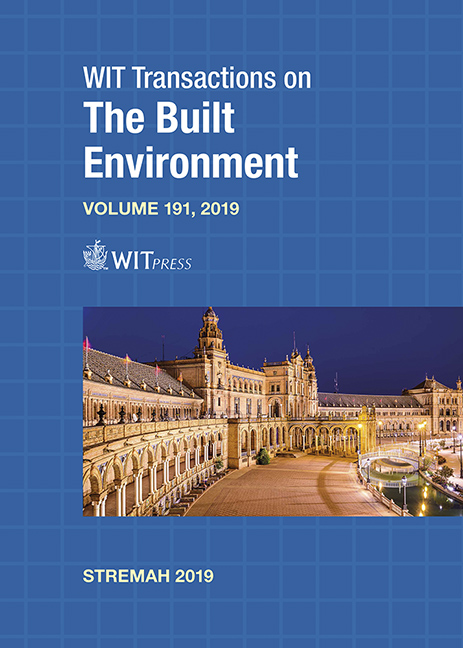PREVENTIVE PRESERVATION OF CULTURAL HERITAGE WITHIN A HOT AND HUMID CLIMATE: A CASE STUDY OF TAINAN CONFUCIAN TEMPLE, TAIWAN
Price
Free (open access)
Transaction
Volume
191
Pages
8
Page Range
301 - 308
Published
2019
Paper DOI
10.2495/STR190261
Copyright
WIT Press
Author(s)
YU CHIEH CHU, MIN FU HSU, TSAI YU LIN, PEI YU YI
Abstract
We took the example of the Tainan Confucian Temple to explore preventive preservation of Taiwanese cultural assets within a hot and humid climate. We mainly used microclimate monitoring data and computational fluid dynamics simulation to analyze the overall environment and identify problem areas, which were shown by the results to be the Ritual Implement Storeroom and Musical Instrument Storeroom. The latter had the highest humidity due to a mango tree located at the rear with a canopy stretching 4–6 m across the roof, which blocked the sunlight during the day and prevented any reduction in humidity. This storeroom includes the original calligraphic wall panels and central beam of the Minglun Hall; therefore we propose measures to improve the current environment without modifying the building materials or structures. First, we suggest either changing the display items or shifting the exhibition area, and transplanting or pruning the mango tree. Second, dehumidification or ventilation equipment should be placed not only in the Musical Instrument Storeroom, but also in the Chung Sheng Shrine and Ta Cheng Palace at night during the hot season, and in the Ritual Appliance Storeroom in the day during the cold season, to improve environmental problems.
Keywords
historic building, preventive conservation, CFD, natural ventilation, micro climate




